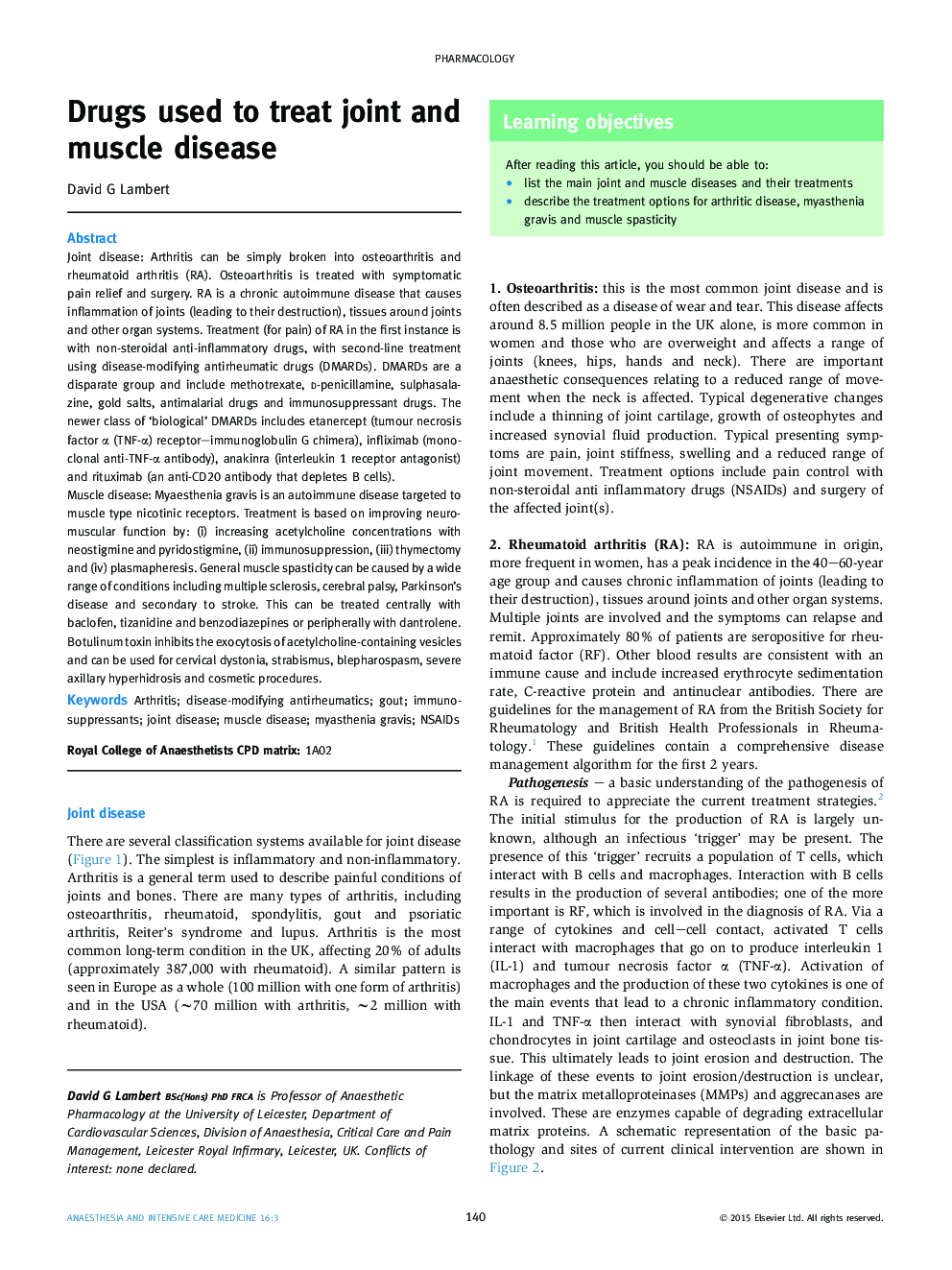| Article ID | Journal | Published Year | Pages | File Type |
|---|---|---|---|---|
| 2742295 | Anaesthesia & Intensive Care Medicine | 2015 | 5 Pages |
Joint disease: Arthritis can be simply broken into osteoarthritis and rheumatoid arthritis (RA). Osteoarthritis is treated with symptomatic pain relief and surgery. RA is a chronic autoimmune disease that causes inflammation of joints (leading to their destruction), tissues around joints and other organ systems. Treatment (for pain) of RA in the first instance is with non-steroidal anti-inflammatory drugs, with second-line treatment using disease-modifying antirheumatic drugs (DMARDs). DMARDs are a disparate group and include methotrexate, d-penicillamine, sulphasalazine, gold salts, antimalarial drugs and immunosuppressant drugs. The newer class of ‘biological’ DMARDs includes etanercept (tumour necrosis factor α (TNF-α) receptor–immunoglobulin G chimera), infliximab (monoclonal anti-TNF-α antibody), anakinra (interleukin 1 receptor antagonist) and rituximab (an anti-CD20 antibody that depletes B cells).Muscle disease: Myaesthenia gravis is an autoimmune disease targeted to muscle type nicotinic receptors. Treatment is based on improving neuromuscular function by: (i) increasing acetylcholine concentrations with neostigmine and pyridostigmine, (ii) immunosuppression, (iii) thymectomy and (iv) plasmapheresis. General muscle spasticity can be caused by a wide range of conditions including multiple sclerosis, cerebral palsy, Parkinson's disease and secondary to stroke. This can be treated centrally with baclofen, tizanidine and benzodiazepines or peripherally with dantrolene. Botulinum toxin inhibits the exocytosis of acetylcholine-containing vesicles and can be used for cervical dystonia, strabismus, blepharospasm, severe axillary hyperhidrosis and cosmetic procedures.
